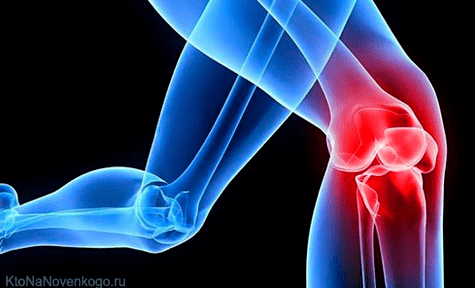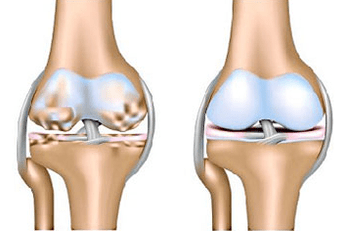From the ancient Greece "arthrosis" is a joint disease ("Arthr-"-joints, "-se" -disease). Sometimes it is also called osteoarthrosis or deformation of osteoarthrosis (from the "Osteon" of ancient Greek - bone).
It is wrong to call the arthrosis of the disease - this is the name of the entire state group, which includes many diagnosis.
Any diseases -where the joints, regardless of the cause, can be called arthrosis, but this will not give any doctor or patient: the word "arthrosis" is not associated with the cause of the disease, or with treatment, but only with some symptoms.
The word "arthrosis" is very similar to other terms -"this is arthritis. " Both describe damage to the joints, often the two are associated with pain in the joints, but have a significant difference.

Usually, arthritis is a disease associated with inflammation in the joints: infection, hereditary or autoimmune disease leads to the onset of arthritis. Its main manifestation includes pain, color changes, swelling in the inflamed joint area.
With arthrosis, manifestations are less noticeable, and the causes are different.
How to work together (knees and others -lain)
The musculoskeletal system requires one to be active in space. Bones are rigid frames, muscles - their driving force, and joints - bone mobile connections.
In the structure of the joints there are always two ends of the neighboring bone that can move relative to each other with the help of muscles, and the small gap between them. This articular gap is filled with special lubricants - synovial fluid. It is needed for cartilage nutrition: there is no vessel in it, so he takes all the nutrients from Synovia.
The articular ends of each bone are covered with cartilage to protect bone tissue from friction. The cartilage also helps to "erase" sharp vibration and mechanical loads: for example, the knees and joints while walking take most of the energy from the foot shot on the ground.
Recovery of this cartilage is a long and complex process that does not always end successfully.
All joints are limited by the capsule - a film that holds the articular fluid, not allowing it to spread. Almost all joints are supported by ligaments who do not allow the neighboring bones to move too much and in the wrong direction.
Why and how arthrosis develops
There are many reasons for the onset of arthrosis, in some cases it is a combination of factors, and sometimes it is impossible to establish the cause.
There are three main reasons and more than a dozen additional. The most popular:
- joint injury;
- congenital joint abnormalities (displacement);
- As a result of inflammation (arthritis) of any cause;
- age (usually over 50 years);
- Violations of metabolism (trace elements), obesity;
- Excessive load on the joints.
The development of osteoarthritis is divided into three stages:
- Beginning. There are no obvious signs, it's hard to find it. The synovial fluid composition changes, the function is getting worse.
- Sore. Complaints and structural changes appear in the form of bone growth - osteophytes.
- Severe arthrosis. Significant decrease in joint function is added: movement is reduced or completely lost; Defective joints and appearance of limbs.
First, the cartilage structure is interrupted: it thickens due to changes in synovia composition or for other reasons. The swelling of the cartilage worsens its diet, so over time the cartilage begins to become thinner.
Then, in the most loaded part of the joints, the cartilage is almost gone or becomes too tight. In return, bone growth begins - the appearance of osteophytes (bone "spikes).
At the end of the disease, bone growth is so clear that it limits the movement to ankylosis - a complete immobility of the joints.
Symptoms of arthrosis
Early manifestations: periodic pain after significant physical activity. Then the morning stiffness joins - after getting up for a few minutes (up to 30), the joints appear to be connected to the elastic bandage: the movement is possible, but it is difficult.
Symptoms later:
- pain in joint palpation;
- thickening of the bone in the joints;
- movement restrictions;
- increased pain during less important physical activity;
- Deformation of the limbs.
Often, arthrosis is a large joint disease (knee, hip) and hands (shoulders). The joints are less common.
The degenerative process in the joints can still be real in the form of unusual sound during movement: collapse, cracks, shock.
Diagnostics
As in the case of other diseases, it begins with the accumulation of anamnesis - the history of the disease.
It is important for doctors to find out if there are risk factors (injury, arthritis, congenital defects, chronic diseases).
After speaking and examining the joints, additional methods will be required: testing and instrumental examination.

The main study in the diagnosis of arthrosis is radiography.
The image will clearly see the major changes in the joints: reduction of joint gaps, bone growth, deformation. In the early stages, small osteophytes can be seen along the edge of the joints, and on uneven bone growth throughout the joint gap will appear.
Ultrasound examination (ultrasound) is an additional method that will help determine the thickness of the cartilage at the earliest level of arthrosis. Arthroscopy is less common: the surgeon places a small camera directly into the joint gap and gets a cartilage image.
Arthrosis treatment
It is not possible to cure arthrosis completely and return the joints to its original state. The combination of some of the right methods will only slow down the development of osteoarthritis, but "returns the youth" will not work.
The main task of treating osteoarthrosis of the knee or hip joint:
- moderate physical activity (walking, walking, sitting position);
- special training, exercise therapy (physiotherapy training);
- diet;
- drug treatment;
- Surgical treatment.
With shoulder joint arthrosis or other localization, the principles are unchanged, except for correction of loads in certain joints.
Physical activities and exercises are selected in each case with an orthopedic traumatologist by a doctor. Diets usually include dietary enrichment with unsaturated fatty acids, various proteins, limiting moderate carbohydrates (especially simple, they are "fast").
The rejection of bad habits (smoking, consuming alcohol in any quantity) significantly slows down the development of arthrosis. Diet also depends on the cause of the disease, chronic illness. You don't have to take supplements.
Drug therapy - painkillers. From NSAIDs -Anti -steroidal medicine is more commonly used. The appropriate choice depends on the presence of chronic diseases and the planned period of administration. Less commonly used are corticosteeroids (glucocorticoids, steroid drugs).
Often, doctors prescribe chondroprotectors - a drug that contains several molecules that are important for cartilage. In most cases, these drugs have no effect on joints, especially tablets and ointments.
It is very rare that the drugs are true -are actually needed and have a clear effect: when examining intra -articular fluid, you can check their volume, and with a lack of injected directly into the joints (intra -articular injection).
Conclusion
Arthrosis is a degenerative joint disease associated with mechanical damage to cartilage and bone tissue growth. It usually develops in people over 50, after a joint injury or long -term burden.
It is characterized by pain after load, morning stiffness and crisis.
























